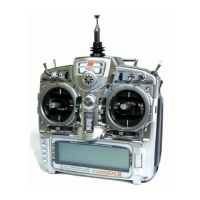31 General Section
General notes
Radio controlled models are a great source of pleasure.
Unfortunately, they can also pose a potential hazard if
not operated and maintained properly.
It is imperative to install your radio control system
correctly. Additionally, your level of piloting competency
must be high enough to ensure that you are able to
control your aircraft under all conditions. If you are a
newcomer to radio controlled flying, please seek help
from an experienced pilot or your local hobby shop.
Safety Do’s and Don’ts for Pilots
• Ensure your batteries have been properly charged
prior to initial flight.
• Keep track of the time the system is turned on so
you will know how long you can safely operate
your system.
• Perform a ground range check prior to the initial
flight of the day. See the “Daily Flight Checks
Section” for information.
• Check all control surfaces prior to each takeoff.
• Use frequency flags.
• Do not fly your model near spectators, parking
areas or any other area that could result in injury
to people or damage of property.
• Do not fly during adverse weather conditions. Poor
visibility can cause disorientation and loss of
control of your aircraft. Strong winds can cause
similar problems.
• Do not fly unless your frequency is clear.
Warning: Only one transmitter at a time can
operate on a given frequency. If you turn on your
transmitter while someone else is operating a
model on your frequency, both pilots will lose
control of their models. Only one person can use a
given frequency at a time. It does not matter if it is
AM, FM or PCM—only one frequency at a time.
• Do not point the transmitter antenna directly toward
the model. The radiation pattern from the tip of the
antenna is inherently low.
• Do not take chances. If at any time during flight you
observe any erratic or abnormal operation, and
immediately and do not resume flight until the cause of
the problem has been ascertained and corrected.
Safety can never be taken lightly.

